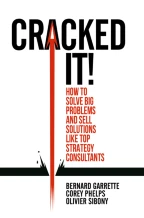
The design thinking path to problem solving is appropriate whenever the problem is human centered, complex, and too poorly understood to be defined using the analytical TOSCA approach. In design thinking, the problem owner you consider is the user of the solution you are trying to design. Typically, this is a product or service, but the design thinking path can be used to create a strategy, an organization, and so on. To state the problem, a designer will first empathize with users through observation, empathy and immersion, in order to gain insights into the problems they face and the way they experience them. It will then become possible to define the problem with a set of design imperatives and a how-might-we design goal.
This is a preview of subscription content, log in via an institution to check access.
eBook EUR 24.60 Price includes VAT (France)
Softcover Book EUR 31.64 Price includes VAT (France)
Hardcover Book EUR 31.64 Price includes VAT (France)
Tax calculation will be finalised at checkout
Purchases are for personal use only
Sawyer, R. (2006). Explaining Creativity: The Science of Human Innovation. Oxford: Oxford University Press.
Brown , T. (2009). Change by Design. New York: HarperCollins Publishers.Beckman, S.L., & Barry, M. (2007). Innovation as a Learning Process: Embedding Design Thinking, California Management Review, 50(1), 25–56.
Grant, A.M., & Berry, J.W. (2011). The Necessity of Others Is the Mother of Invention: Intrinsic and Prosocial Motivations, Perspective Taking, and Creativity. Academy of Management Journal, 54(10), 73–96.
Leonard, D., & Rayport, J.F. (1997). Spark Innovation Through Empathic Design. Harvard Business Review, November–December issue, 102–113.
Hammersley, M. (2007). Ethnography. In G. Ritzer (Ed.), The Blackwell Encyclopedia of Sociology. Malden, MA: Blackwell Publishing.
Nisbett, R.E., & Wilson, T.D. (1977). Telling More Than We Can Know: Verbal Reports on Mental Processes. Psychological Review, 84, 231–259.
Brown , T. (2009). Change by Design. New York: HarperCollins Publishers. p. 44.Csazar, F.A., & Levinthal, D.A. (2016). Mental Representation and the Discovery of New Strategies. Strategic Management Journal, 37(10), 2031–2049.
Avery, J., & Norton, M.I. (2014). Learning from Extreme Consumers. Harvard Business School Industry and Background Note. Harvard Business School Publishing.
Robertson, D.C., & Breen, B. (2013). Brick by Brick: How LEGO Rewrote the Rules of Innovation and Conquered the Global Toy Industry. New York: Crown Business. Madberg, C., & Rasmussen, M.B. (2014). An Anthropologist Walks into a Bar … Harvard Business Review, 92(3), 80–88.
Lipshtitz, R., & Waingortan, M. (1995). Getting out of Ruts: A Laboratory Study of Cognitive Model Reframing. Journal of Creative Behavior, 29(3), 151–172. Ohlsson, S. (2011). Deep Learning: How the Mind Overrides Experience. New York: Cambridge University Press.
Hasso Plattner Institute of Design, Stanford University (2009). An Introduction to Design Thinking Process Guide.
Conifer Research. (2002). How to Find Buried Treasure Using Experience Maps.Nielsen, L. (2013). Personas. In M. Soegaard, & R.F. Dam (Eds.). The Encyclopedia of Human-Computer Interaction (2nd Ed). Aarhus, Denmark: The Interaction Design Foundation.
Pruitt, J., & Adlin, T. (2006). The Persona Lifecycle: Keeping People in Mind Throughout Product Design. Burlington: Morgan Kaufmann.
Hasso Plattner Institute of Design at Stanford University. (2017). Bootleg Bootcamp. (pp. 26). Retrieved from https://dschool.stanford.edu/resources/the-bootcamp-bootleg.
Zhang, T., Gino, F., & Margolis, J. (2014). Does “Could” Lead to Good? Toward a Theory of Moral Insight. Harvard Business School Working Paper 14–118.